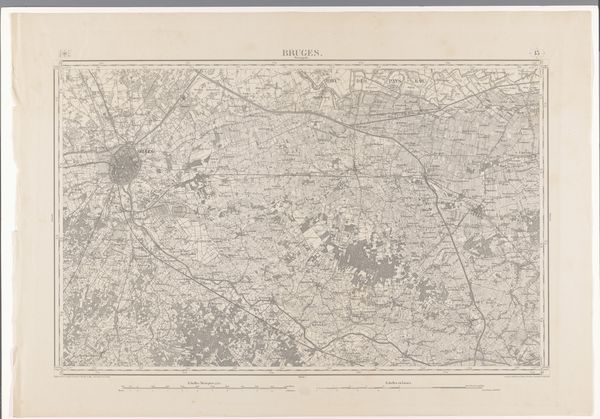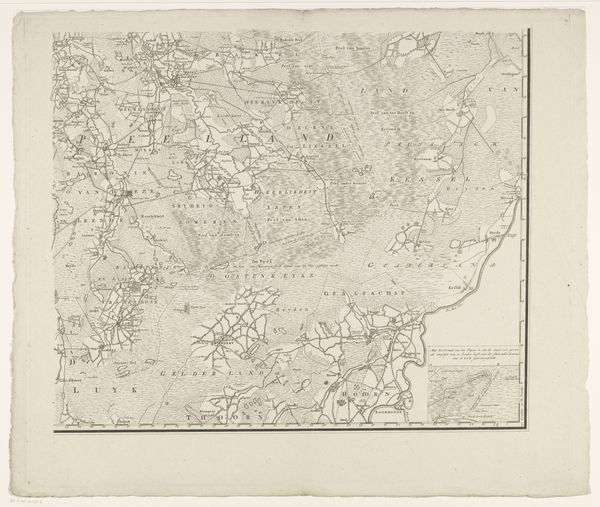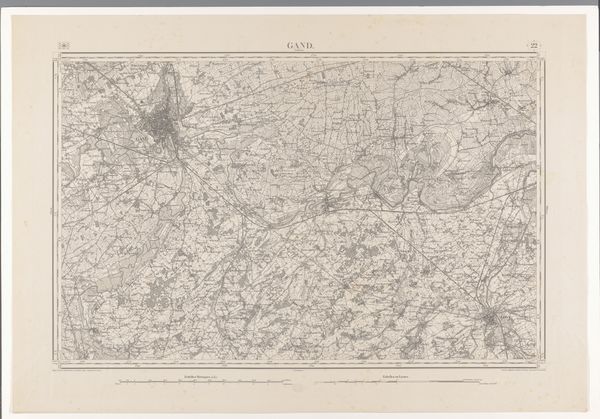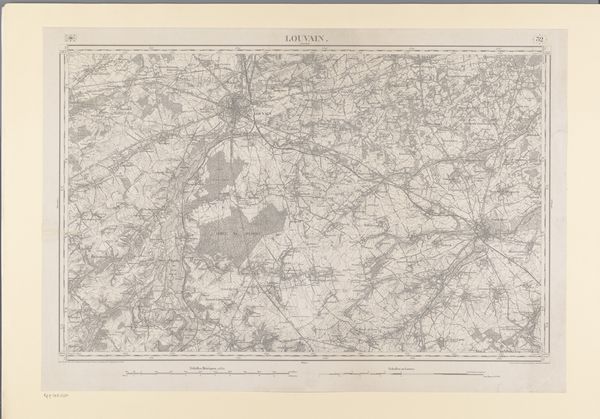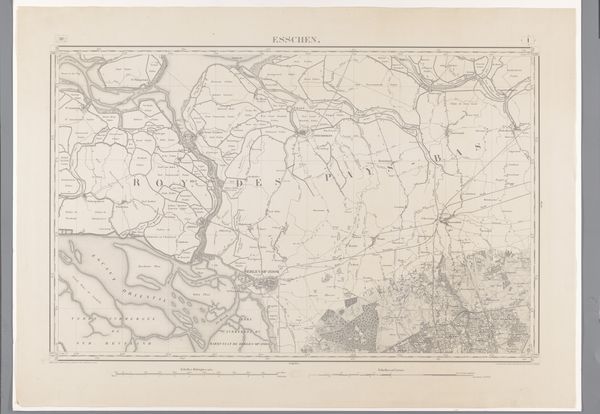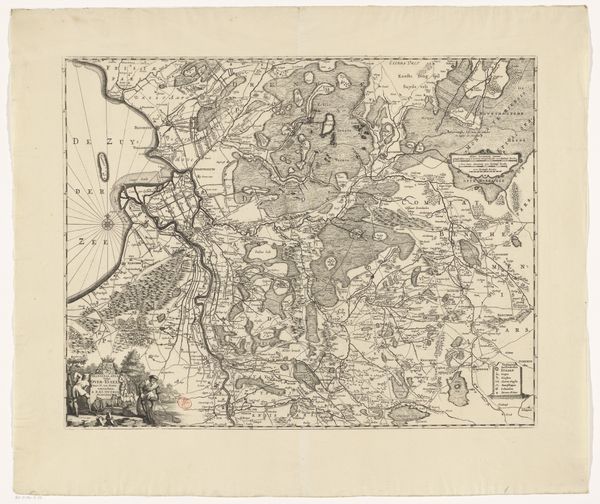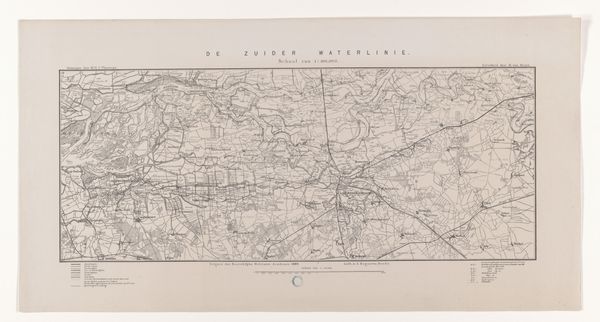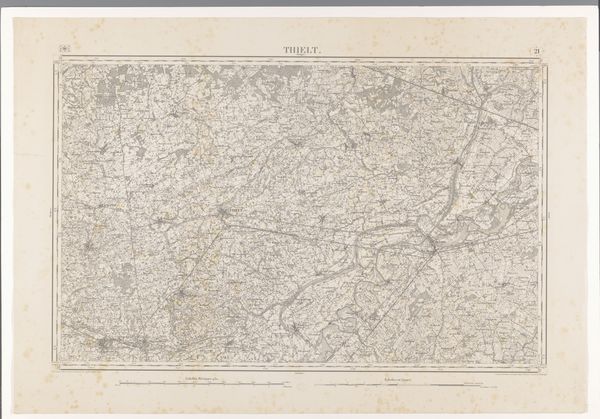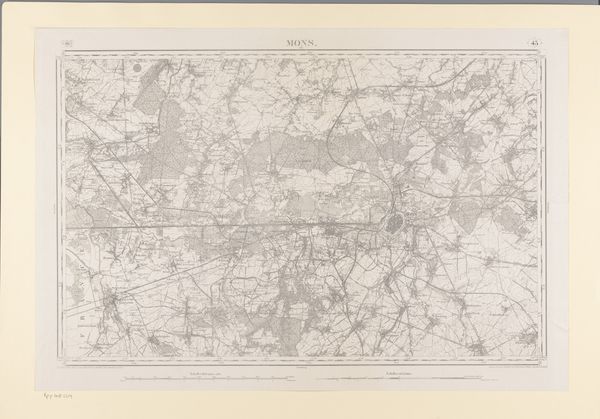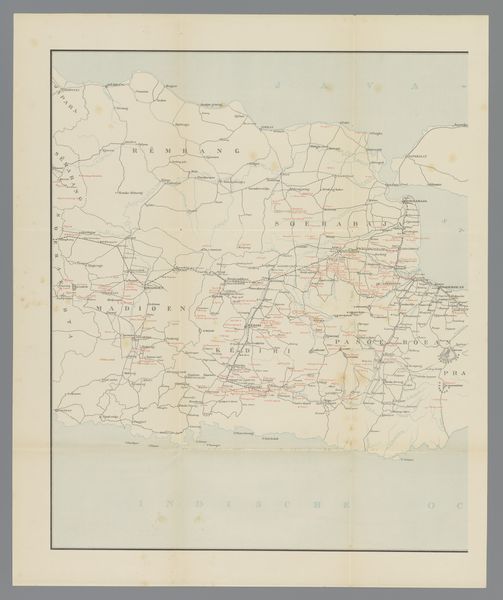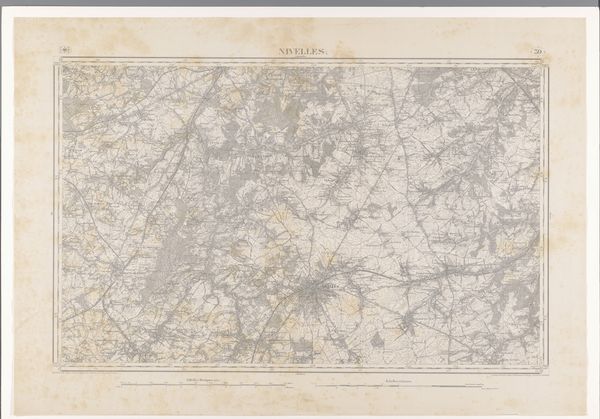
print, engraving
#
16_19th-century
# print
#
landscape
#
river
#
engraving
Dimensions: height 613 mm, width 463 mm
Copyright: Rijks Museum: Open Domain
Editor: So, this is "Kaart met de verdedigingswerken aan de IJssel en de Waal," created in 1882 by Adriaan Jan Bogaerts. It's an engraving, a printed map. It’s incredible to see all the detail rendered by this process. What strikes me is how this was created, its functionality – less of a precious art object, more of a technical instrument. How would you approach thinking about this piece? Curator: Right, focusing on that materiality is key. Look closely – the engraving. It isn't just about aesthetic representation, it’s about mass production and dissemination of information. This map isn’t high art, yet the act of its creation relies on the highly skilled labour of the engraver, and we must not forget its primary social function to assist the needs of the military. What does that tell you about its intended audience and the power structures at play in late 19th century Europe? Editor: I see. So it's less about the aesthetic experience and more about the social and material conditions of its creation. That focus on the process is really interesting. Curator: Precisely! How do the lines on the map delineate territory? How are resources represented – consider the waterways? Notice the level of detail invested into creating these intricate lines. Consider the engraver: what class and professional status do you suppose he might hold? Maps such as this reflect not only geographic data, but also systems of control, of military power and the infrastructure of governance. Editor: That really makes me rethink how I view maps in general, thinking more about their creators, not just their function. It almost feels like I should know who made this exact engraving and not just the name attached as the author. Curator: Exactly! Recognizing the labour and means of production behind seemingly "objective" documents reveals a whole other dimension. Editor: I hadn't considered it that way. I will look more closely at material contexts. Curator: That's the goal. To reveal what the artist does not show you outright.
Comments
No comments
Be the first to comment and join the conversation on the ultimate creative platform.
